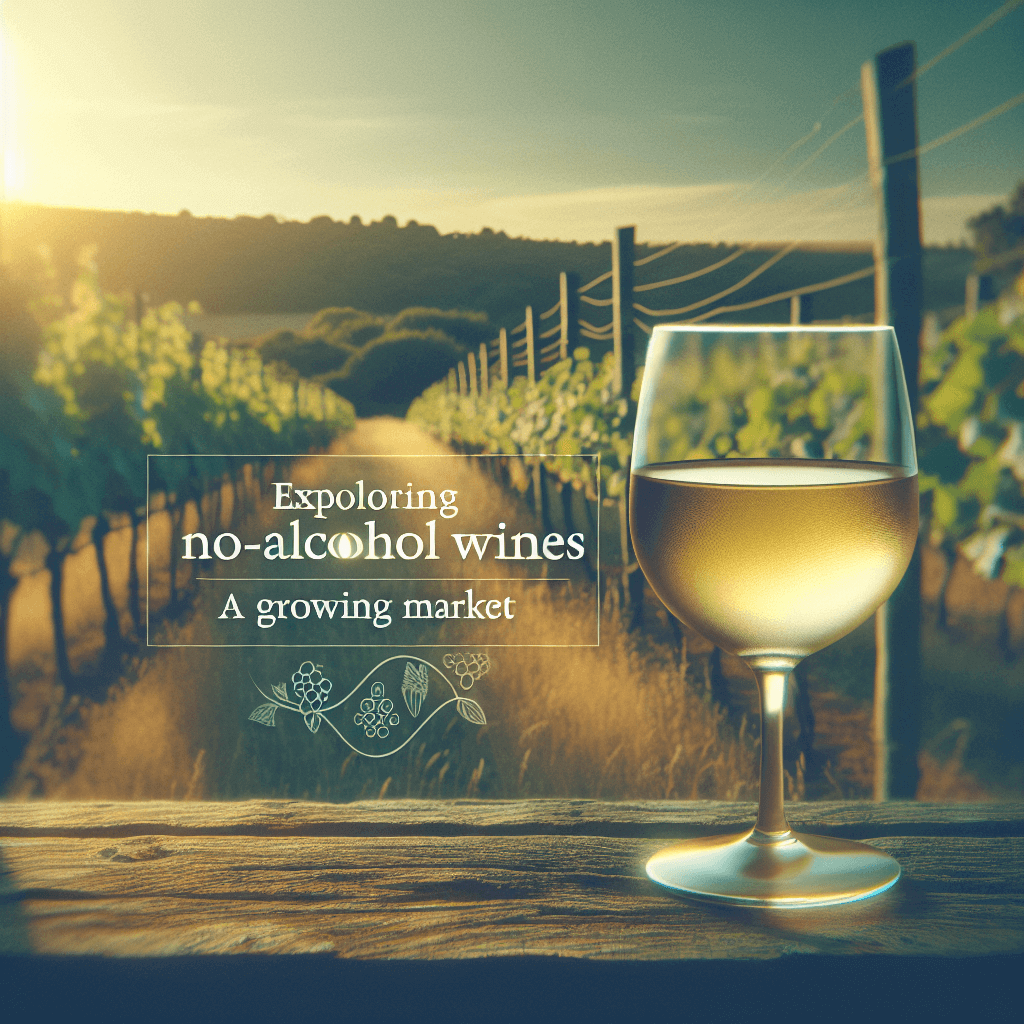The market for low and non alcoholic wines is expanding rapidly as more consumers seek healthier and more mindful drinking options. This trend is driven by a variety of factors, including health consciousness, changing social norms, and advances in winemaking technology. In this article, we will explore the reasons behind the growing popularity of low and no-alcohol wines, their benefits, and what the future holds for this exciting market segment.
Health Consciousness: One of the main drivers of the low and non alcoholic wine market is the increasing focus on health and wellness. Many consumers are reducing their alcohol intake for health reasons, leading to increased demand for these alternatives.
- Health Benefits: Low and no-alcohol wines offer the enjoyment of wine without the negative health effects associated with alcohol consumption.
- Calorie Reduction: These wines typically contain fewer calories, making them a popular choice for those looking to maintain a healthy weight.
- Mindful Drinking: The rise of the mindful drinking movement encourages people to be more conscious of their alcohol consumption and its effects on their health.
Flavour and Quality: Advances in winemaking techniques have significantly improved the flavour and quality of low and non alcoholic wines. Modern methods allow winemakers to retain the complex flavours and aromas of traditional wines while reducing or eliminating the alcohol content.
- Improved Techniques: Techniques such as vacuum distillation and reverse osmosis help preserve the flavour and aroma of the wine.
- Quality Varieties: High-quality low and no-alcohol wines are now available in a variety of styles, including reds, whites, rosés, and sparkling wines.
- Consumer Satisfaction: Improved flavour and quality have made these wines more appealing to a broader audience.
Variety and Innovation: The low and no-alcohol wine market is characterised by a wide range of options and continuous innovation. Winemakers are constantly experimenting with new techniques and grape varieties to meet the diverse preferences of consumers.
- Diverse Options: Consumers can choose from a wide variety of low and no-alcohol wines, catering to different tastes and occasions.
- New Grape Varieties: Winemakers are exploring new grape varieties to create unique and interesting low and non alcoholic wines.
- Creative Blends: Innovative blends and styles are emerging, offering consumers more choices than ever before.
Social Acceptance: Low and no-alcohol wines are becoming more socially accepted, making it easier for individuals to enjoy a drink in social settings without the effects of alcohol. This trend is particularly evident among younger generations and health-conscious consumers.
- Changing Norms: Social norms around drinking are evolving, with greater acceptance of low and no-alcohol options.
- Inclusivity: These wines provide an inclusive option for social gatherings, catering to those who prefer not to consume alcohol.
- Positive Perception: The perception of low and no-alcohol wines has shifted, with many viewing them as a sophisticated and responsible choice.
Market Growth: The market for low and non alcoholic wines is expected to continue growing, with more wineries entering this segment and expanding their offerings. This growth is driven by increasing consumer demand and the ongoing trend towards healthier lifestyles.
- Rising Demand: Consumer demand for low and no-alcohol wines is on the rise, driven by health and wellness trends.
- Market Expansion: More wineries are recognising the potential of this market and are introducing new low and non alcoholic products.
- Future Prospects: The future looks bright for the low and no-alcohol wine market, with continued innovation and growth expected.
Conclusion: The growing market for low and non alcoholic wines is a reflection of changing consumer preferences and a focus on health and wellness. With improved flavour and quality, a wide variety of options, and increasing social acceptance, these wines offer a compelling alternative for those looking to reduce their alcohol intake. Whether you are a health-conscious consumer or simply curious about the trend, low and no-alcohol wines are worth exploring.

